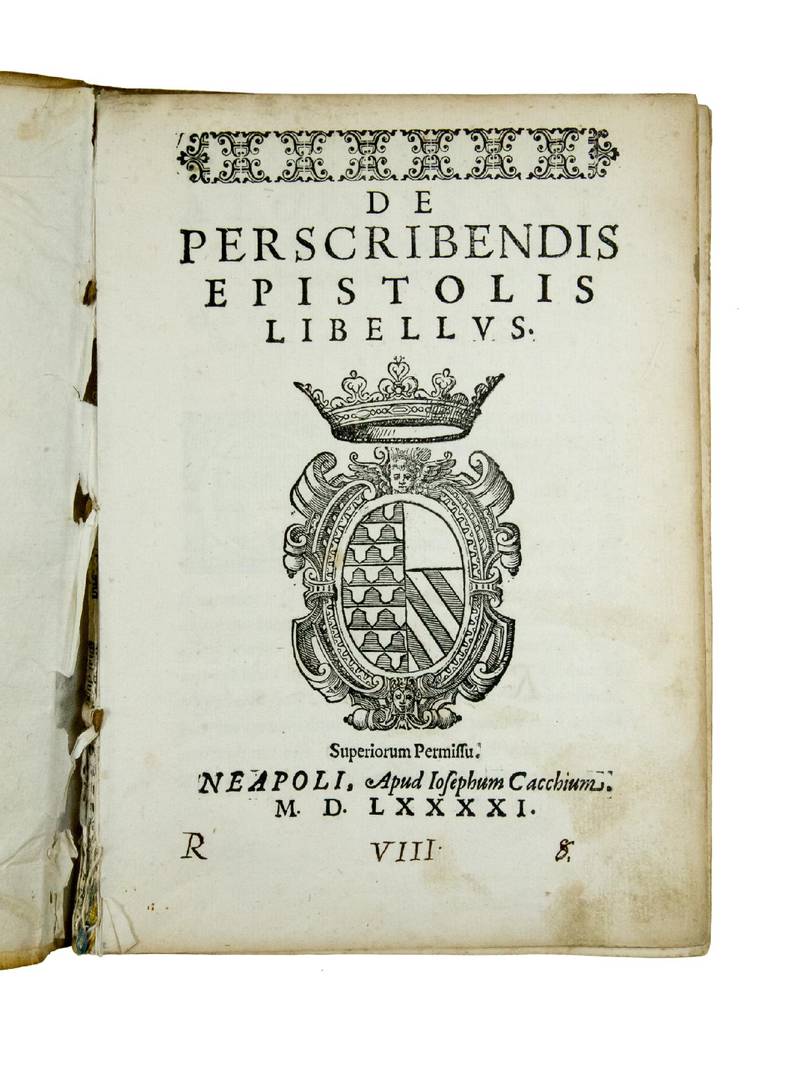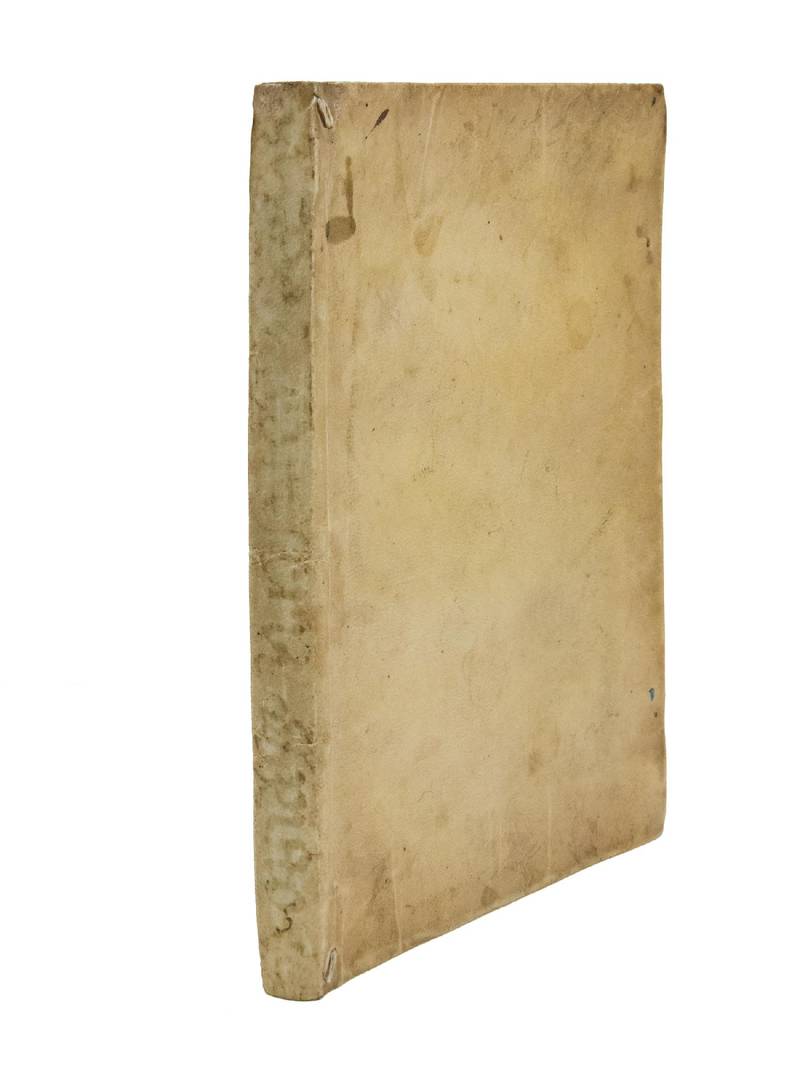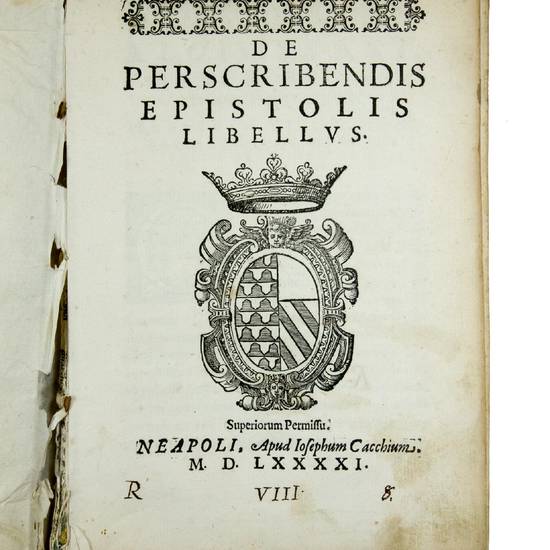4to. (8), 145, (3) pp. *4, A-S4 , T². With the woodcut arms of Giovanni Battista Loffredo, Marquis of Monteforte, on the title-page and the printer's device on the verso of the last leaf. Contemporary limp vellum.
Edit 16, CNCE 47740; Gueudet, p. 696; P. Manzi, La tipografia napoletana nel '500: Annali di Giuseppe Cacchi, Giovanni Battista Cappelli e tipografi minori (1566-1600), (Firenze, 1971), p. 151, no. 152.
FIRST EDITION. The work opens with a dedicatory letter by Santorelli to Giovanni Battista Loffredo (d. 1609), Marquis of Monteforte, dated January 13, 1590. This is followed by a preface to the reader by a relative of Santorelli, Tommaso Aniello Schiavo, in which are enumerated the most elegant letter writers of the past, e.g. Angelo Poliziano, Christophe de Longueil, Pietro Bembo, Jacopo Sadoleto, and Paolo Manuzio.
Santorelli gives the definition of twenty kind of letters (from nunciatoria to conquestatoria). At the end of these definitions are cited some sources from ancient authors where such letters can be found, and some definitions are accompanied by examples from his own correspondence.
At the end of the volume are found some rhetorical rules to be observed in letter writing and a list with forms of address, De superscriptione epithetorum: “Le répertoire placé sous cette rubrique correspond tout à fait aux listes d'états du XVe siècle, bien que le mot ne soit jamais prononcé. Après le clergé, du Pape à l'abbesse (ce qui peut passer pour un progrès), on trouve un laïcat, ou la noblesse d'épée disparaît au profit de la magistrature: après l'empereur, le roi, le prince et le duc, on va du consul au juge; vient un tiers-état qui est encore conduit par les intellectuels, théologiens en tête, les simples ‘citoyens' passeront après le scholasticus et le tabellarius; un repentir bénéficiera au chevalier et au soldat (on croirait à une influence d'Érasme), mais aussi à l'orateur. Comme dans les méthodes du XVe siècle allemand, mais aussi chez Pontanus, la famille vient en fin. Reste que les laboratores (sauf l'artisan) sont oublié, ou exclus” (G. Gueudet, L'art de la lettre humaniste, Paris, 2004, p. 439).
Luigi Antonio Santorelli was born at Monteforte and practised as a lawyer. The De perscribendis epistolis libellus was reprinted at Naples in 1653 (cf. C. Minieri Riccio, Memorie storiche degli scrittori nati nel regno di Napoli, Napoli, 1844, p. 319).
[9147]





